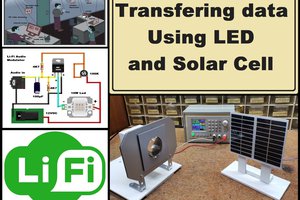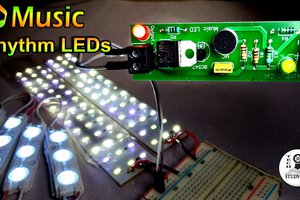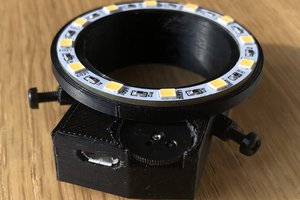Introduction
Heart rate is a vital physiological parameter that reflects the health and fitness of an individual. Accurate and non-invasive heart rate monitoring is crucial in medical diagnostics and sports science. The principle of photoplethysmography (PPG) offers a convenient way to measure heart rate by detecting blood flow variations. This project demonstrates the development of a heart rate monitor circuit that employs PPG using basic electronic components such as an LED and an IR receiver.
For Full Project :
https://electronicsworkshops.com/2024/11/13/heart-rate-monitor-circuit-using-photoplethysmography-ppg/

Objectives
- To design and implement a non-invasive heart rate monitor using PPG.
- To process the signal variations caused by blood volume changes.
Components Required
- LED (Light Emitting Diode): Emits light to pass through the body part.
- IR Receiver: Detects variations in light intensity.
- Microcontroller (e.g., Arduino or any suitable microcontroller): Processes the signal and calculates the heart rate.
- Operational Amplifiers: Amplify the weak signals received from the IR receiver.
- Low-Pass and High-Pass Filters: Remove noise and extract the relevant signal.
- LCD Display: Displays the calculated heart rate.
- Resistors and Capacitors: For circuit stability and filtering.
- Power Supply: To power the circuit components.
Principle of Operation
The heart rate monitor operates on the principle of photoplethysmography, which measures changes in light intensity due to variations in blood volume. When an LED emits light through a part of the body (e.g., a fingertip), the blood flow affects the amount of light absorbed or transmitted. An IR receiver detects these changes in light intensity. These variations are then converted into electrical signals, which can be processed to calculate the heart rate.
Circuit Design

- LED and IR Receiver Placement: The LED and IR receiver are aligned such that light from the LED passes through the body part and reaches the IR receiver.
- Signal Amplification: The output from the IR receiver is a weak signal that needs to be amplified using operational amplifiers.
- Filtering: A combination of low-pass and high-pass filters is used to eliminate noise and isolate the PPG signal.
- Microcontroller Interface: The processed signal is fed into the microcontroller, which calculates the heart rate by analyzing the periodicity of the signal.
- Display Unit: The heart rate is displayed in beats per minute (BPM) on the LCD.
Working Procedure
- Place the fingertip or any other body part between the LED and the IR receiver.
- The LED emits light, which is modulated by blood flow in the body part.
- The IR receiver detects changes in light intensity and converts them into electrical signals.
- The signals are amplified and filtered to remove noise.
- The microcontroller processes the signals to calculate the heart rate.
- The calculated heart rate is displayed on the LCD screen.

PCB Files

3D files


Manufacturing Files
Gerber
Gerber_attendance_PCB_Heart-Rate-Monitor-Circuit_2025-01-09Download
Order Directly from PCB WAY
I have already uploaded all these required manufacturing files in PCBWAY website. You can easily go to the below link and place you order, and get your Own Home Automation PCB manufactured from one of the best pcb manufacturer PCBWAY
Applications
- Healthcare: Monitoring patients’ heart rates in hospitals or at home.
- Fitness: Tracking heart rates during exercise or sports activities.
- Research: Studying physiological responses to various stimuli
For Full Project :
Conclusion
The heart rate monitor circuit based on PPG offers a practical and cost-effective solution for measuring heart rates non-invasively. By utilizing simple components and a straightforward design, this project can be expanded and integrated...
Read more » electronicsworkshops
electronicsworkshops
 mircemk
mircemk
 Subhajit
Subhajit

 DIY GUY Chris
DIY GUY Chris